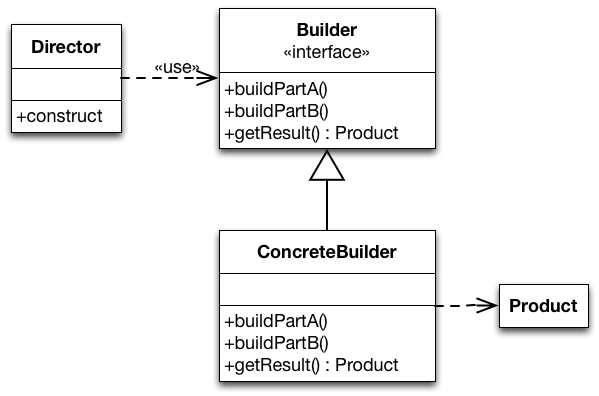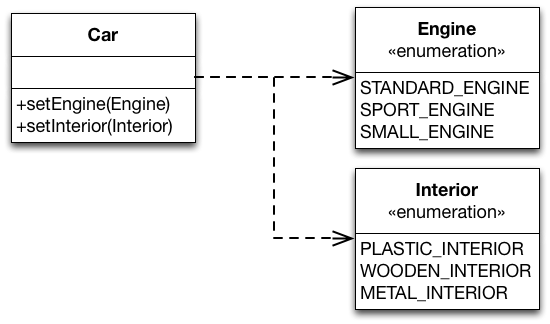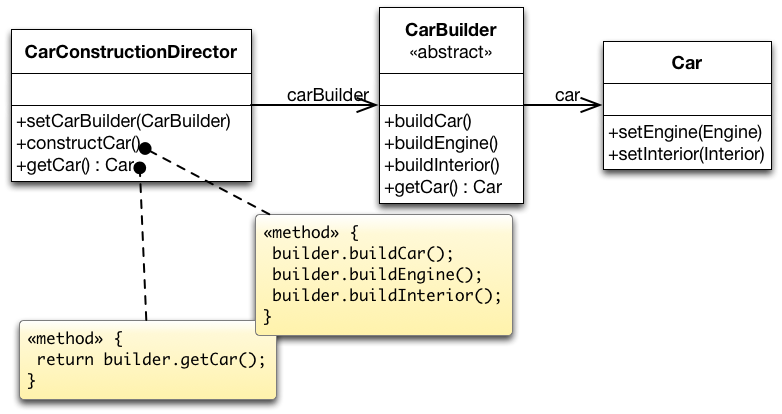Builder Design Pattern
Intent
Structure
Builder defines the individual steps of the construction of Product.
Director knows in which order to construct Product.
ConcreteBuilder implements the steps of construction.
Example
We want to construct different types of cars.
In this example, cars have an engine and an interior.
CarBuilder defines the two methods to construct car parts. Concrete builders must implement these methods. For convenience, the instantiation of cars (buildCar()) is implemented in CarBuilder.
CarConstructionDirector is configured with a CarBuilder and calls the construction methods in the correct order.
Discussion
Assessment of the Builder Pattern:
Advantages:
- Creation of objects can be configured at runtime.
- Concrete builders can use complex logic.
E.g. a car builder creating cars depending on available parts in storage. - Good way to create composite structures.
Disadvantages:
- May yield many classes.
- Only works if all objects can be constructed using the same order.
Builder vs. Abstract Factory Pattern:
Abstract Factory focuses on creating multiple objects of a common family.
- Abstract Factory knows what object to create.
- Configuration is fixed after deployment of the software.
Builder focuses on creating complex objects step by step.
- The director knows how to construct the object.
- Configuration is chosen at runtime via the concrete builder.


